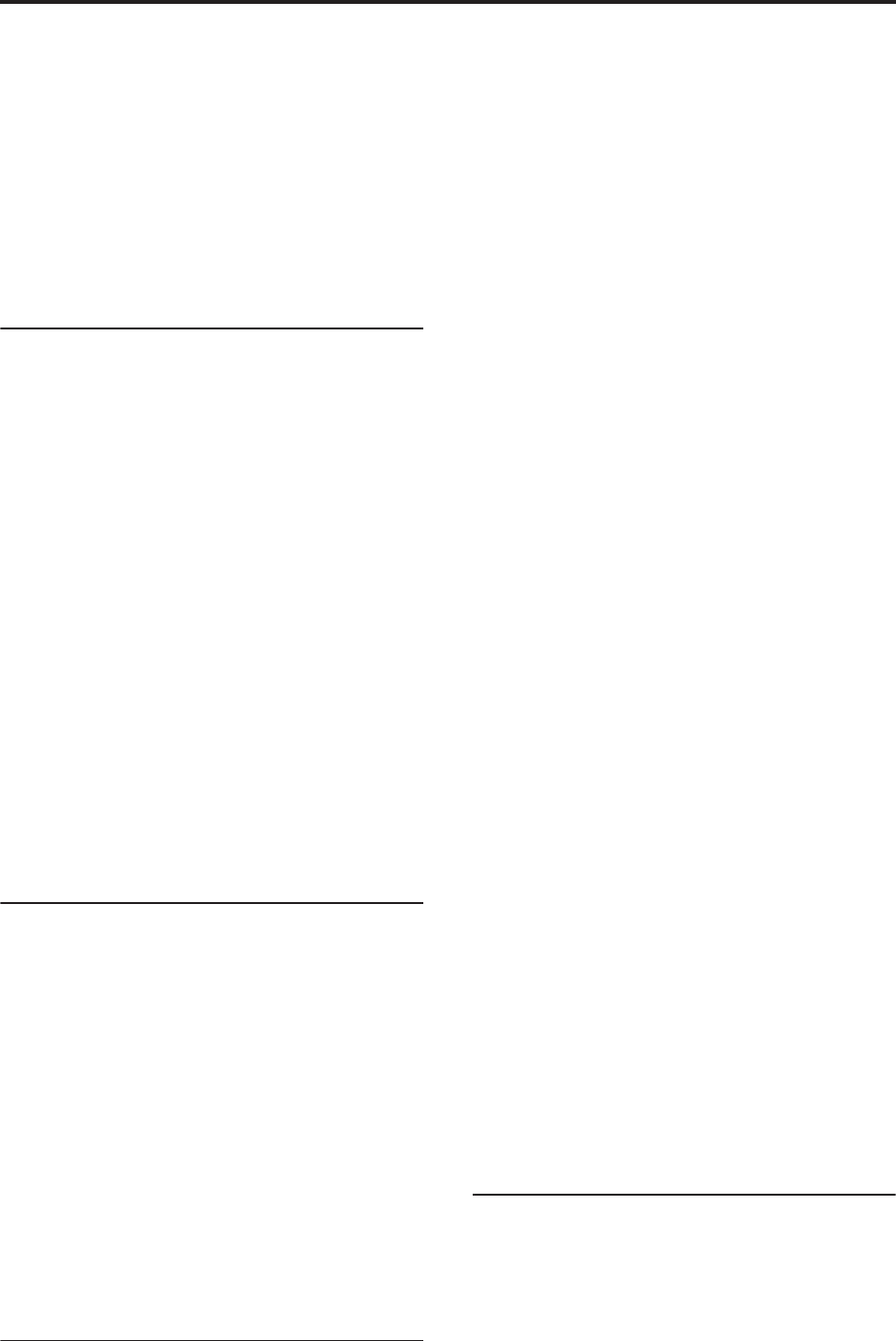
Sequencer mode
412
to return to Program mode and edit the program
itself.
• OASYS’s AMS (Alternate Modulation) capability
lets you use control changes for realtime control of
the parameters of the programs used in a program.
Its MIDI Sync abilities let you synchronize the LFO
speed to changes in the tempo.
• Dmod (Dynamic Modulation) functionality lets you
control effect parameters in realtime. You can also
use MIDI Sync to synchronize the LFO speed or
delay time to changes in the tempo.
Editing and operation features
• The Auto Song Setup function lets you instantly set
up program or combination settings of Program
mode or Combination mode as a song, so that you
can start recording simply by pressing the
SEQUENCER START/STOP switch.
This lets you seamlessly move from playing a
program or combination to producing a song.
When you come up with a phrase or an idea, this
function lets you easily turn your inspiration into a
song.
• Program and Combination settings can be copied to
a song.
• Sequencer data such as a song that you create can
be saved in OASYS’s native format, or transmitted
as a MIDI data dump.
• A song you created can be converted into SMF
(Standard MIDI File) data. SMF songs can also be
loaded.
• The Play/Rec/Mute and Solo buttons let you
instantly play/mute any desired track on the fly.
• You can rewind or fast-forward MIDI Tracks while
listening to the sound.
Sampling features
• Multisamples you create can be played back
together with internal programs in Sequencer
mode. The Time Slice function of Sampling mode
lets you divide a rhythm loop sample and create
performance data that corresponds to the divided
samples. In Sequencer mode you can play this
performance data, and adjust the playback tempo
without affecting the pitch of the rhythm loop
sample. You can also exchange the note numbers of
the data, or modify the timing to freely re-create
new rhythm loops.
• The OASYS provides an In-Track Sampling
function which lets you sample an external audio
source while the song plays back, and will
automatically create note data to trigger that
sample at the appropriate point during the
playback of the track.
Hard disk recorder section
• You can use up to 300,000 audio events (or 400,000
MIDI events), up to 200 songs, and up to 999
measures per song.
• Sixteen audio tracks are provided. Each track
provides linear 16-bit PCM recording, with a
maximum length of 80 minutes for one recorded
take.
• Automation data (volume, pan, EQ, send 1/2) can
be recorded for each track.
• Sixteen tracks can be played back simultaneously,
and four tracks can be recorded simultaneously.
• The Stereo Pair function lets you control two
adjacent tracks by adjusting just the odd-numbered
track. This lets you simultaneously make mixer
settings for a pair of stereo-recorded tracks.
• A broad range of internal buses can be selected as
the recording source: Audio Inputs 1–4, S/P DIF,
L/R, REC Bus 1–4, or Individual 1–8. Flexible
routing even lets you insert effects into external
audio sources and record them.
• When you realtime-record, an audio event and
region data are created. The region data is linked
with the WAVE data (audio data) recorded on the
hard disk. You are free to edit this data in a variety
of ways, such as moving the location of the audio
event, or editing/replacing the region data or
WAVE file.
• You can use numerous editing commands
(including event editing) to edit the recorded audio
events. Event editing lets you edit the time stamp
or region data of the audio events.
• Region editing lets you edit the WAVE file
selection, and adjust the start/end addresses of the
WAVE file in units of a single sample.
• You can freely select a region of a WAVE file
(mono, 48 kHz sample rate) and use it in your song.
You can use commercially available sample data
etc. in your song by sample-rate converting it from
44.1 kHz into 48 kHz. WAVE files editing
operations such as Volume Ramp and Normalize
are also provided.
• The Time Stretch function lets you stretch or shrink
the tempo of a phrase you recorded or a sample
you assigned, making it match the tempo of your
song.
• The convenient Anchor function makes it easy to
place a phrase at the correct timing in your song.
• Auto and manual punch-in/out are provided.
• The Rehearsal function lets you practice punch-
in/punch-out recording without actually recording
anything.
Common section
• As the MIDI clock master, you can choose either
Internal, External or Auto, letting you synchronize
the OASYS with other MIDI equipment.
• For each song, three-band EQ is provided on each
MIDI track and each audio track.
• For each song, you can use twelve stereo insert
effects, two stereo master effects, and two stereo
total effects.
• When you’ve created songs, you can resample them
to hard disk to create WAVE files, and then use


















